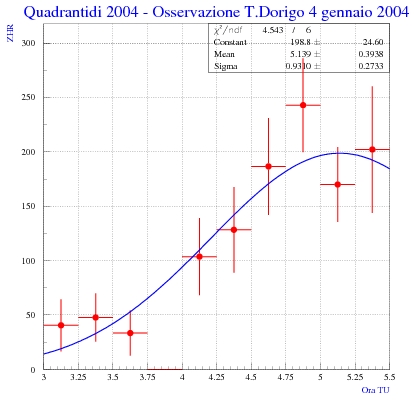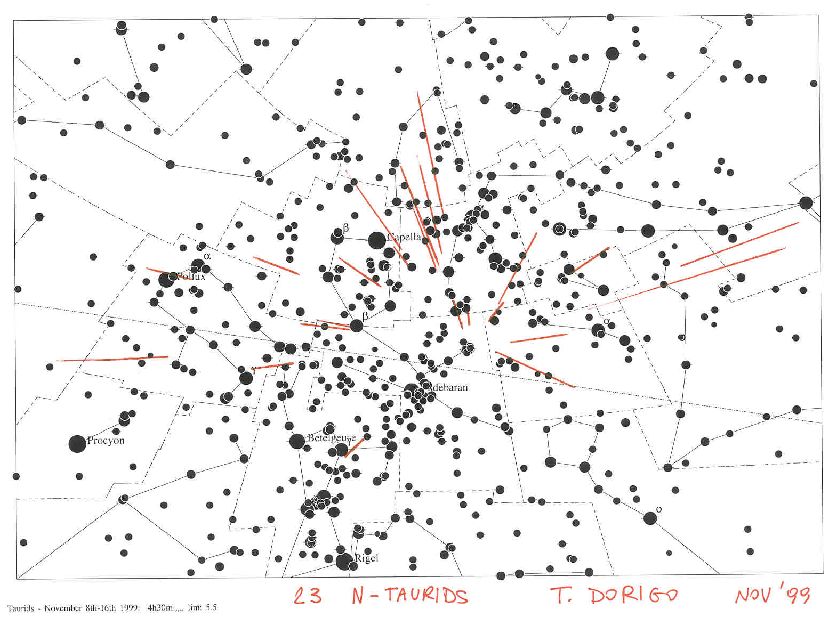Perseids are a rather stable stream, and they produce a detectable rate of meteors from late July to late August, with peaks in the nights of August 11th and 12th, depending on the exact trajectory that the Earth takes while plunging in the dust-ridden area of the solar system. The rate is usually encoded in the acronym "ZHR", for zenith-hourly-rate. ZHR values of 100 to 150 are common for the two highest-rate nights.
But what exactly should you expect to see ?
My banner in this blog is a nice Perseid meteor I myself photographed on late July of 2004! But that was a bright meteor, and the photograph recorded more colour that I could see with the naked eye. Before discussing what you will see we need to discuss how you should prepare for doing it!
First of all, you should realize that the vast majority of meteors are faint! They cannot be seen under light-polluted skies. So find a very dark place as far as possible from urban pollution, possibly elevated (the higher up you go, the smaller extinction of the meteor's light is caused by the athmospheric layer above you), and well screened from horizon lights. And of course, with a clear sky above!
Dress warmly -more warmly than you would expect you need. And bring a reclining chair. Then sit down, adapt your eyes to darkness (it takes about 20 minutes), and try to embrace with your sight as big a swath of sky as you can. This should not be at the zenith, nor at the horizon: my advice is to opt for a target about 50 degrees above the horizon, a optimal compromise between real field of view, density of meteors per unit area, and darkness of the sky.
At the peak, the ZHR is going to be above 100 per hour. This does not mean you will see over a meteor per minute! The ZHR is calculated for a perfectly dark sky, an experienced observer, a radiant point at the zenith, and no obstacles hindering the human vision. All these factors reduce the number of meteors you will actually see: you should be happy if you can record about 20 meteors per hour. Still, an exciting time awaits you!
What to do ?
For a casual watch, you can just enjoy the show, maybe counting the number of meteors you see just for fun. If you want to try and discriminate what meteors come from the Perseid stream and what are instead due to other falls (there are at least a dozen active in August), you need to know where the constellation of Perseus is: all meteors from the Perseid stream will appear to originate from a point of the sky within that constellation.
 More serious observers might consider bringing a digital recorder with them, recording time, duration (in seconds), apparent magnitude, flares or long-lasting trail (the Perseids are known to leave greenish trails), and other observations. The data can be later analyzed to produce graphs such as the one on the right (produced with one very lucky night of observation of the Quadrantids in 2004)...
More serious observers might consider bringing a digital recorder with them, recording time, duration (in seconds), apparent magnitude, flares or long-lasting trail (the Perseids are known to leave greenish trails), and other observations. The data can be later analyzed to produce graphs such as the one on the right (produced with one very lucky night of observation of the Quadrantids in 2004)... If you are really interested in reconstructing the actual position of the apparent shower position, you can draw the tracks in a map -but be careful, it must be printed in a gnomonic projection, like the one above (showing some 23 northern Taurids I recorded in 1999).

Those were years when I was more serious about this stuff, and I used to send my observations to the IMO. Now I have mostly stopped this activity, but I still enjoy the major shows... Like the huge falls of Leonid meteors of the early 2000's (check the link also if you wish to see a few clips of the peak activity I recorded in 2002) when ZHR rates of 3000 and above were recorded at the peak.
I hope you will leave your impressions below if you actually have a peek at the Perseids tonight!




Comments